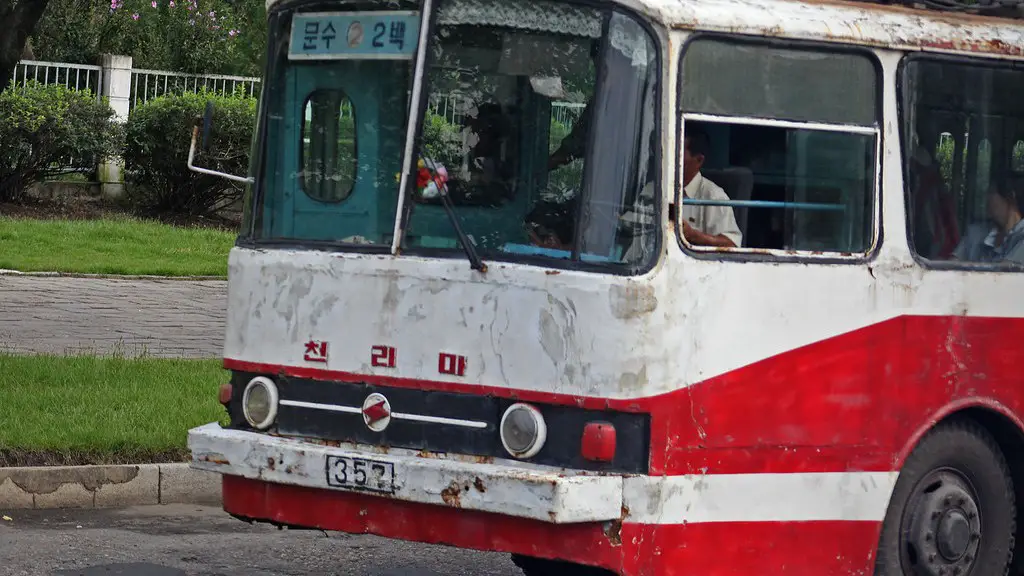The Start of a Regime
North Korea today is a heavily militarised, reclusive nation-state, but before 1948 it was far different. Together with South Korea, North Korea constituted one of the two parts of a divided peninsula. After World War II, the nation had been occupied by both the Soviets and the Americans. The Soviet Union soon installed a military government and elected a hard-line communist regime in October 1945.
Soon after, the Soviet military government divided the occupation zone along the 38th parallel, with the north falling under Soviet control and the south falling under American control. The division of the September 1945 parallel became official when the Soviets and Americans recognised the two countries in August 1948. This division became the de-facto border between North and South Korea, and it is still the same today.
Political Climate Before 1948
Under the Soviet occupation between 1945 and 1948, North Korea made major political changes. It adopted a new government system and constitution in 1946, with the creation of a president, prime minister, and a National Assembly. Meanwhile, North Korean leaders also heavily instilled a sense of North Korean national identity, often at the expense of South Korean identity.
At the same time, North Korean leaders used Stalinist tactics to oppose the United States, a sentiment that still lingers in the current North Korean regime. During this period, North Korea’s leaders created a Stalinist party structure, adopted a totalitarian constitution and encouraged adoration of Kim Il-sung, who attributed all of the country’s successes to him and his Stalinist system.
Economic Issues
Although the Soviet occupation boasted a flourishing economy in North Korea, it was soon in crisis after the Soviets withdrew from the region in 1948. This led to a series of disruptive economic policies, such as price controls, transportation restrictions, rationing, and currency instability.
Furthermore, North Korea also experienced an urgent food crisis. famine conditions began to emerge across the country, and by the late 1940s North Korea had become one of the poorest nations in Asia. The food crisis has caused an estimated three million North Koreans to suffer from starvation and disease, further complicating the unstable political, social and economic conditions of the regime.
Cultural Changes
North Korea also experienced a significant cultural shift after the Soviets left in 1948. The nation became increasingly isolated, with only limited contact with the outside world. Additionally, North Koreans became increasingly nationalistic, and the government sought to instil loyalty towards Kim Il-sung and his government policies.
North Korea also become increasingly militarised, with military training for all able-bodied citizens. This was a stark contrast to the early 1940s when the country was more open and relaxed, with a more independent social life and the freedom to travel for people living in the region.
Religious Freedom
The religious situation in North Korea has always been complex. Religion was tolerated and even encouraged in some instances during the early 1940s. However, after the Soviet occupation, religious freedom was significantly curtailed as the government sought to limit freedom of expression and religious activities.
Religious persecution became increasingly common, with many religious leaders and followers were arrested, tortured, and incarcerated in prison camps. Even today, religious activity is strictly limited and is closely monitored, and public displays of religious faith are discouraged and often punished.
Controversy to This Day
The North Korean regime continues to be a controversial and reclusive state, with the government maintaining tight control over media and communication. The country has failed to make meaningful progress, with the economy still fragile and the people living in poverty.
Furthermore, controversial and widely condemned human rights violations persist in the country. The government is widely accused of utilizing torture and other forms of inhumane treatment to quell dissent, and is also known to incarcerate political prisoners in brutal labor camps.
International Relations
North Korea’s foreign relations are extremely strained, with tensions running especially high with the United States. It has conducted more than a dozen major missile tests over the past several years and continues to operate its nuclear weapons program.
The nation is largely economic embargoed, and it has limited diplomatic ties with other countries due to its isolationist attitude. As a result, North Korea has become increasingly dependent on its major ally, China, for economic and political support.
Modern North Korea
Today, North Korea is one of the most reclusive states in the world, with an opaque government and economy that is largely decorated by international sanctions and diplomatic pressure. The country’s nuclear weapons program has become increasingly advanced and threatening, and it is estimated that the North Korean military has the firepower to deploy chemical and biological weapons.
In conclusion, North Korea is a country that has gone through enormous social, political, and economic changes since 1948. As the nation’s political leadership collapsed and it became increasingly isolated, economic instability and religious persecution emerged. This has resulted in a population that lives in poverty and lives without basic civil rights.


